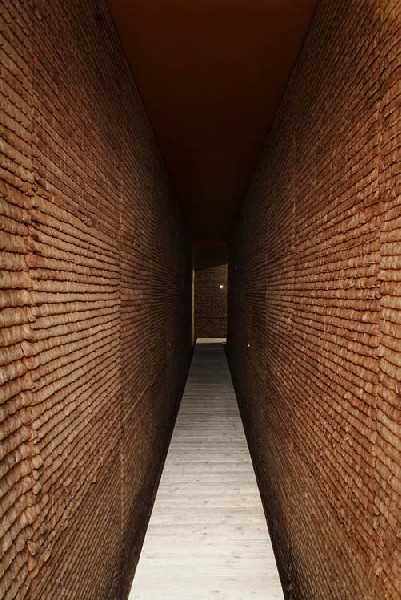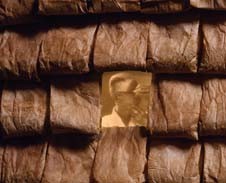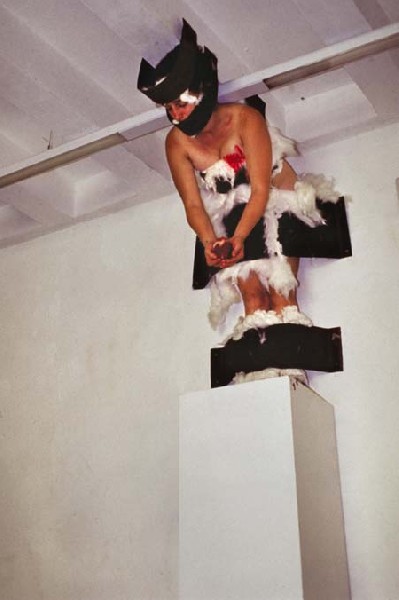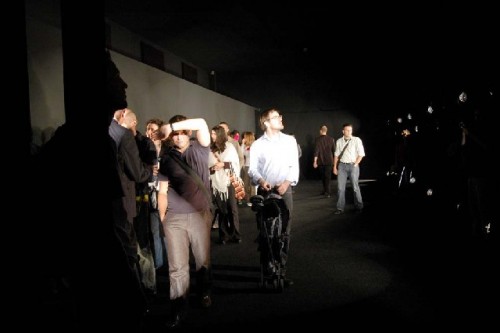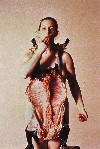Tania Bruguera: Neuberger Museum of Art
On the Political Imaginary
By: Adam Zucker - Mar 20, 2010
Tania Bruguera's work in On The Political Imaginary an exhibition on view at the Neuberger Museum of Art at SUNY Purchase, brings together many powerful statements through the use of both live performance and installation.
This exhibition might be considered a retrospective. However, it is a uniquely new feel to her work over the last 15 years. She has recreated and reworked history (as history should progress) and made a strong case for the longevity of performance art as an important medium. In this exhibition there is absolutely no way that the viewer won't be affected in a potent and inspiring way.
The Cuban born artist affects us with performances that test our senses and emotions. This is apparent from the moment you enter the exhibition through the first piece Poetic Justice (2002-2003). It entails a long, narrow tunnel covered in pungent tea bags with small video screens projecting snippets from newsreels. These works are uniquely sensitive to the artist who makes a profound socio-cultural difference through art.
This is not the usual westernized canon of contemporary art on display. It is a discourse on sociopolitical relevance in the 21st century, which I enjoy, and Bruguera excels at.
She is one of the most successful contemporary political performance artists because she makes you feel genuinely uncomfortable and astute to what is happening. Bruguera urges us to confront our reality and see a bigger picture. You feel like a political prisoner in the work Untitled (Kassel, 2002), a darkened room where floodlights flash on and performers walk (or goose step) on metal scaffolding above the viewers, methodically cocking their guns.
Untitled (Havana 2000) is unsuitable for the weary. It consists of a dark room filled with milled sugar cane on the floor. You lose all sense of perception but your senses tell you that you're not alone. Inside this installation there is one source of light, a television on the ceiling with a looped video of Fidel Castro. There are also four, naked, male performers who, after your eyes adjust, are seen making gestures toward the screen in an allegorical and poignant statement of blind and forced allegiance towards their leader.
A strong symbolic message is seen in the small, disheveled room containing the installation Untitled (Palestine, 2001). There is text written all over the room calling for the unification by the U.N. of Israel and Palestine into a nation for all refuges. While this statement is more objective than the work in the rest of the exhibition, it makes for interesting discourse. Whether you agree or not, the message is blatant, and well presented.
In the final gallery there are a number of installations and resources that are used in the various live performances that take place during the course of the exhibition. The performance I observed was called Studio Study (1996), an endurance performance where metal strips restrain the performer as she stands elevated on a pedestal for 45 minutes. This already sounds like a test of mental and physical toughness but she is also stuffed with raw cotton that protrudes from her restraints.
This exhibition is a strong spark of the burgeoning performance art movement. Performance art is seeing a busy revival with Performa 2010 a few months ago, Bruceforma (a night of performance art that was part of The Bruce High Quality Foundation's Brucennial), and Tino Sehgal show that just closed at the Solomon R. Guggenheim Museum. A heavily anticipated Marina Abramovic retrospective is at the Museum of Modern Art this month. Lately many aspects of performance art have been showcased.
The Bruguera exhibition will be on view until April 11.

